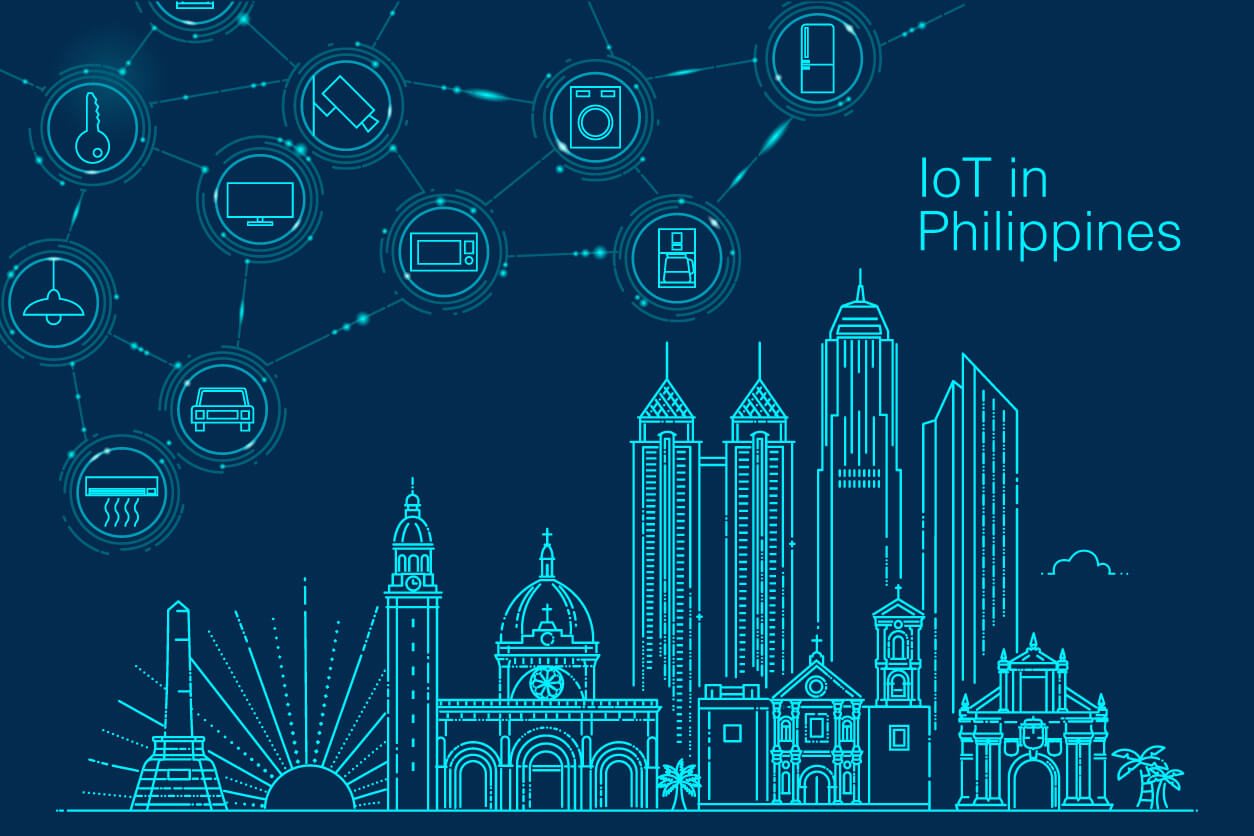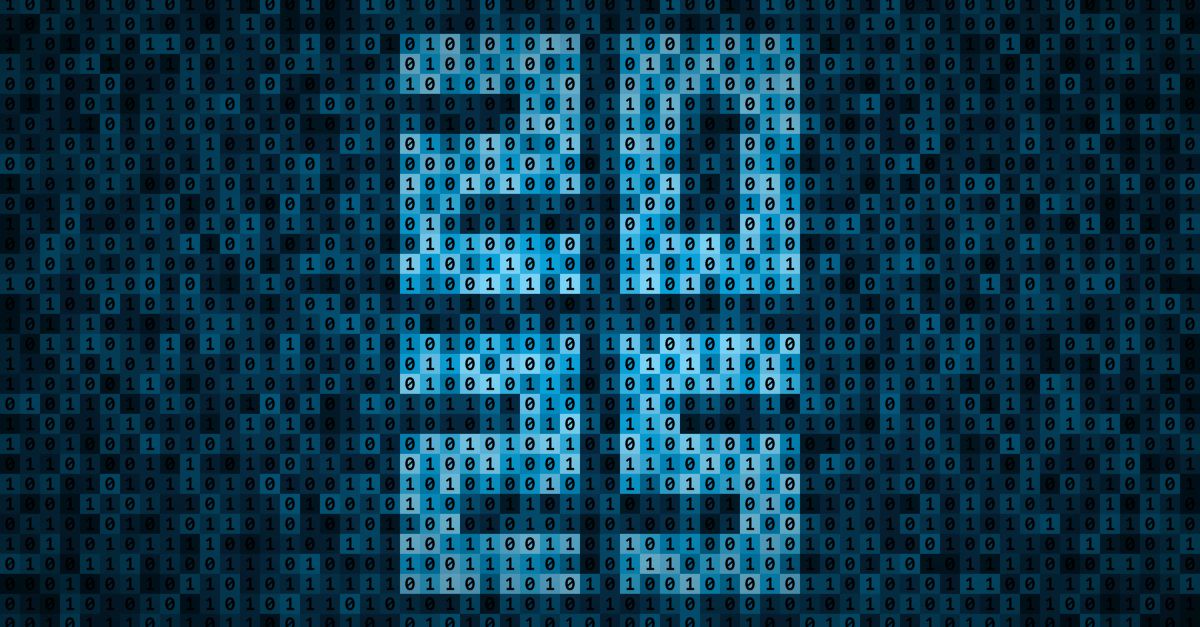What is Internet of Things (IoT)?
Sensors, software, smart technologies, and interconnected devices—these are the parts that make up the Internet of Things (IoT). These networks of physical objects—or “things”—are connected to the Internet and interact autonomously to create a smarter environment.
For example, a basic door lock can keep a house secure, but with the application of sensors that can connect to the Internet, the door lock can be configurated such that only the registered users can unlock it through authentication, and alert the owner when an unrecognized user or an intruder tries to break in. Smart door locks can also have anti-theft capabilities to prevent tampering, and built-in video cameras that can show who is at the door.
How Does Internet of Things Work in the Philippines?
The Philippines is among the counties in APAC that are starting to build smart cities and smart homes. By 2030, the country’s digital economy can generate P5 trillion in economic value.
Means of transportation have always been an issue in the Philippines, but with the rise of intelligent transport systems, vehicles can now share data to ensure safer journeys, reduce travel time, and conserve energy by providing real-time data to drivers on the road.
RFID-enabled payments are also being implemented so drivers no longer have to manually pay, making toll payments simpler and faster.
Aside from that, residential homes within the Philippines are implementing smart devices to simplify tasks. Organizations are also using smart devices within their working environment, such as data and logistics smart devices that improves traffic management within offices. These IoT devices help companies create a more holistic plan on action using data that can be gathered in real-time. Healthcare facilities can give diagnosis and provide treatment with speed and accuracy, as well as act on time with the help of fitness trackers and smart medical devices. The medical device industry in the Philippines is projected to grow 8.8 percent annually, reaching $884.3 million by 2023, according to the Department of Trade and Industry.
Since processing raw data can take years to collect and analyze, IoT technologies such as edge computing are helping industries interpret data at a breakneck speed, minimizing delay and errors.
IoT Benefits in the Philippines
IoT plays a very important role in this evolving world of technological advancement. They improve connectivity and automation. But aside from that, let us look at other reasons why IoT in the Philippines is so critical.
-
Fosters smart infrastructure
Infrastructures that are enabled by IoT make remote monitoring, management, and tracking of systems possible and can provide knowledge and actionable data from immense sources of real-time data.
-
Improves water processes
Smart technologies are being utilized in water treatment plants and managing wastewater. Specifically, real-time monitoring through IoT is being utilized to allow pumps to be more sensitive to demand, adjusting water as needed.
According to Inquirer.com, “Through the Internet of Things, advanced real-time data collection and sensors, wastewater treatment facilities can operate in a more predictive manner, reducing downtime and avoiding serious business and environmental consequences.” -
Provides precision agriculture
Smart farming is transforming Philippine agriculture. Since agriculture provides a great source of income for Filipinos, crop production is made easier and more efficient for agriculture workers and farmers by using IoT to help them collect real-time data on crop production, climate/weather, and air quality. This allows them to make better decisions when planting, fertilizing, and harvesting crops.
-
Facilitates patient monitoring and other healthcare devices
IoT devices are extremely critical for an industry where timely action is critical—a common situation within the healthcare sector. IoT enables real-time data to be analyzed which is important when it comes to patients that require immediate diagnosis.
IoT technology allows healthcare professionals to be more proactive and help them get the best treatment for the patients. IoT also supplies more effective and accessible telemedicine and remote conditioning. -
Improves transportation
In 2020, the Philippines started to adopt an RFID system to all vehicles nationwide. From cash-based payments, all tollways are now implementing an independent cashless system through RFID. This Radio Intelligence Identification is installed in vehicles and scanned when reaching toll barriers. The RFID holds data about what class the vehicle is and its corresponding account. RFID in vehicles is primarily used to make cashless payments, but there are other use cases for this technology as well, which we will discuss more on later.
-
Eases daily tasks
IoT devices analyze data that may take years to be collected otherwise. Courses of action can be deployed sooner. A more streamlined process with minimum delays improves operations and can maximize base loyalty.
These benefits, in turn, encourage success and supply a better outcome, as follows:
- Business transformation
- Convenience
- Improved functionality
- Economic advances
- Increase productivity and efficiency
IoT Devices Examples
IoT Devices in the Philippines
Aside from the examples mentioned above, here are some of the IoT devices being used in the Philippines:
-
Access Control Systems
Digital authentication is a big thing in many companies and organizations in the Philippines. Some examples include access control system management when entering and exiting a venue.
Specifically, locking and unlocking doors through digital authentication versus the use of conventional key. Many offices in the Philippines utilize Access Control Systems such as microchips, RFID tags, digital certificates, and environmental sensors into machines to provide protection. -
Artificial Intelligence (AI)
AI leads to a better knowledge of consumer problems, such as online chatbots that can respond to some of the frequently asked questions (FAQs) by customers. Smart home devices such as Amazon’s Echo, Apple’s Siri, and Google also use AI to serve as an automation hub where devices can be connected, linked, and control several smart home devices remotely. -
Radio Intelligence Identification (RFID)
This technology in the Philippines is equivalent to barcoding but with more features. The most crucial one is that RFID tag data could be read without needing to be matched with an optical scanner, whereas barcode data should be aligned with one.
Through RFIDs, it is possible to protect a company’s facility and access control through embedded microchips and RFID tags, and environmental sensors. RFID technologies in the Philippines are increasingly being utilized to help with IoT installations as well.
Some of its use cases include:
- Carpark management
- Company asset tracking
- Inventory systems
Security for Internet of Things
IoT devices are made to make life easier, but without an equally strong security solution to back it up, it may cause irrecoverable damage that can impact thousands. When handing valuable data and insights at such a large scale, it should be expected that the IoT devices are backed up with the strongest and most stringent security measures.
In the Philippines, organizations are stepping up on their cyber defenses. 94% of those surveyed sped up their digital transformation initiatives. Local organizations are also implementing cybersecurity strategies, with identity and access management topping the list at 57%.
IoT security tools protect devices from threats and breaches, identify and monitor risks, and can help fix vulnerabilities. IoT security ensures the availability, integrity, and confidentiality of your IoT solution.
Security tools are essential and necessary for IoT devices and technologies especially when they are used at a national level. IoT security tools are needed to mitigate threats and breaches, monitor risks, and fix vulnerabilities. IoT security solutions also ensure integrity and confidentiality of data stored within IoT technologies.
Thus, a good security solution does the following:
- Ensure integrity and confidentiality of IoT solutions and data.
- Mitigate cybersecurity risks.
Internet of Things Security Issues
Some vulnerabilities can be an entry point for cybercriminals. Here are some potential issues that IoT devices can face if they do not have proper security measures put in place:
- Lack of penetration testing – Penetration testing is controlled simulated attacks that can help identify potential weaknesses. Without it, undetected vulnerabilities can be left undetected which may be exploited by hackers.
- Unpatched vulnerabilities – Another entry point for hackers is unpatched vulnerabilities. It is always important to ensure that IoT devices do not have any bugs that can allow an attacker to infiltrate a network.
- Vulnerable APIs - APIs are frequently targeted by threats such as Man in the Middle (MITM) attacks, code injections, and distributed denial of service (DDoS) attacks.
- Weak user or third-party authentication – The impact of weak authentication can be very severe. Without proper authentication, sensitive data and functionality of an IoT device can be directly accessed. This will give the attacker the chance to brute-force their way into another device’s data and take full control over the entire internal infrastructure. Hence, it is important to incorporate safe and reliable multi-factor authentication.
- Insecure communications – Unsafe network communication such as public Wi-Fi networks can expose the confidentiality, integrity, and authenticity of data and run the risk of unauthorized access of IoT devices. Denial-of-service (DoS) attack – ScienceDirect defines DoS attacks as “any attack that can undermine the network or systems’ capacity to perform expected functions.” DoS are the most common and easiest attacks on IoT systems.
- Denial-of-service (DoS) attack – ScienceDirect defines DoS attacks as “any attack that can undermine the network or systems’ capacity to perform expected functions.” DoS are the most common and easiest attacks on IoT systems.
Internet of Things Security and Privacy
IoT with weak security can be an entry point to hacking and other known vulnerabilities. Here are a few IoT security tips:
- Implement multi-factor authentication
- Deploy end-to-end encryption
- Routinely check for software updates and install them on time -
- Choose a reliable cybersecurity provider
Make sure your organization, data, and operations are secure as you grow your IoT ecosystem by always making security your top priority.
Why IoT Security is Important
IoT security is growing at a large scale and implementing security is important because without it, any connected objects—from something as simple as a temperature checker, to something as crucial as health monitoring and other time-sensitive remote operations—can be hacked. Once hackers gain control, they can tamper with the object’s functionality; steal and wipe out critical data; or manipulate the results.
Moreover, IoT contains vast amounts of data unique to its users. Improperly secured, these devices become vulnerable to security threats. For example, pacemakers, heart monitors, and defibrillators are some of the IoT devices commonly used in the healthcare industry. While providing convenience and efficiency, they can also pose danger as they can be susceptible to security threats, that is, if they are not backed with strong security protections.
In 2016, the Mirai botnet attacked high-traffic websites. This served as a wake-up call for those involved in the IoT ecosystem, demonstrating how a single vulnerability might unleash cyberattacks on an unprecedented scale.
When developing an IoT-enabled strategy, companies must always put security on top of their list to avoid these occurrences. IoT devices are also susceptible to hijacking and are used in botnets, which are a collection of malware-infected internet connected devices that are controlled from a remote location. Under protected IoT devices have become targets of cyberattacks, phishing campaigns, and DDoS attacks in recent years.
GlobalSign IoT Solutions for the Philippines
With Internet of Things requiring various technologies to make it secure, GlobalSign’s next-generation IoT Identity Platform could be the solution for your company’s identity lifecycle management from design and manufacturing through deployment, management, and sunsetting. Some of the features and things you can do with GlobalSign’s IoT Identity Platform include:
Cloud-based service
High throughput Certificate Authority (CA)
Dedicated revocation services
Integration options to connect you to your ecosystem and end devices
Provision and secure service identities with a purpose-built, PKI-based platform for exceptional security.
If you are looking to fuel your business using IoT devices but fear the potential entry-points for unwanted access to data and other personal information, you are not alone. As such, identity and security solutions providers like GlobalSign are seeking the latest technology to ensure clients and IoT innovators are provided with unique solutions to prevent cyberattacks.
If you are interested or want to learn more about GlobalSign’s IoT Solutions, click here or speak with us today!







